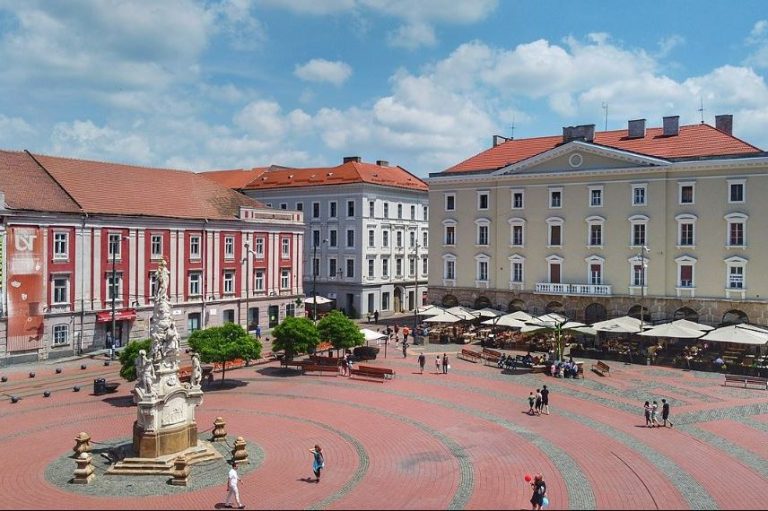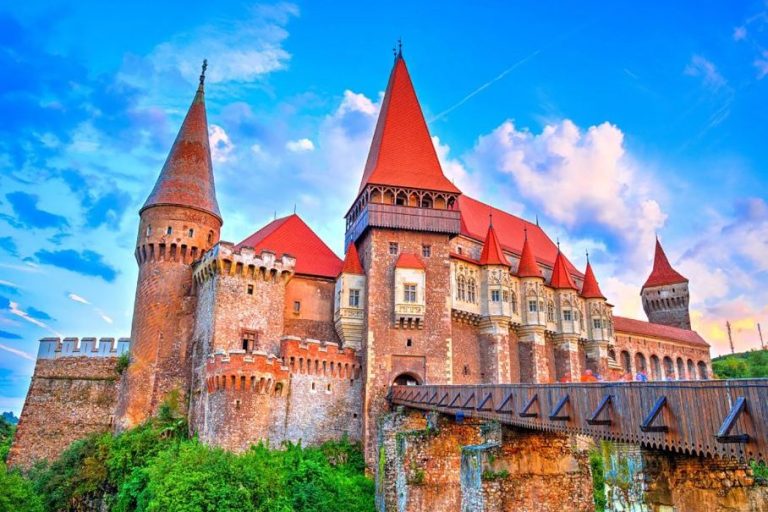Romania
Romania[a] is a country located at the crossroads of Central, Eastern and Southeast Europe. It borders Ukraine to the north and east, Hungary to the west, Serbia to the southwest, Bulgaria to the south, Moldova to the east, and the Black Sea to the southeast. It has a mainly continental climate, and an area of 238,397 km2 (92,046 sq mi) with a population of 19 million people. Romania is the twelfth-largest country in Europe and the sixth-most populous member state of the European Union. Europe's second-longest river, the Danube, empties into the Danube Delta in the southeast of the country. The Carpathian Mountains cross Romania from the north to the southwest and include Moldoveanu Peak, at an altitude of 2,544 m (8,346 ft). Bucharest is the country's largest urban area and economic hub. Other major urban centres include Cluj-Napoca, Timișoara, Iași, Constanța and Brașov. Source: Wikipedia
Danube Delta
Recognized as the world's third most biologically diverse area, the Danube Delta has been recognized by UNESCO for its outstanding universal value.
Castles & Midieval Towns
Transylvania (Central Romania) boasts some of Europe's best-preserved medieval towns, most notably Sighisoara, Brasov and Sibiu.

Culture
The countryside is the heart and soul of Romania, where peasant culture remains a strong force and medieval ways prevail like nowhere else in Europe.
Cities
Romanian Road-Trip
This map shows a potential road-trip, starting from Timisoara, close to the Serbian border, meandering eastwards to the black sea, via
- Hunedoara - Corvin Castle
- Cluj Nopoja
- Fagaras
- Sigisoara
- Sibiu
- Transfagaran
- Brasov - Bran Castle
- Sanaia - Peles Castle
- Bucharest
- Tulcea - Danube Delta
It is based on Rose's "Perfect Romania Itinary: 2 week Road Trip", but with the Danube Delta added. It could be followed by a meander up the Black Sea coast to Bulgaria.
What to See...
The mighty Danube River flows 1,788 miles from its springs in Germany's Black Forest to the Black Sea. Just before reaching the sea it forms the second largest and best preserved of Europe's deltas: 2,200 square miles of rivers, canals, marshes, tree-fringed lakes and reed islands.

Timisoara (1)
Nicknamed the "Little Vienna" or the "City of Roses", Timișoara is noted for its large number of historical monuments and its 36 parks and green spaces.[22] The spa resorts Buziaș and Băile Călacea are located at a distance of 30 and 27 km (19 and 17 miles) from the city, respectively, mentioned since Roman times for the properties of healing waters.

Corvin Castle - Hunedoara (2)
The most spectacular Gothic-style castle in Romania, Corvin was commissioned by the Anjou family and soon erected on the site of a former Roman camp. The castle served initially as a fortress and - in the mid-14th century - became the residence of Transylvania's ruler, Iancu de Hunedoara. Iancu upgraded the fortress transforming it into the most stunning castle in Transylvania. The beautifully preserved structure features a sumptuous Knights' Hall, an impressive drawbridge, high buttresses, inner courtyards, a chapel and some 50 rooms resplendent with medieval art.
Corvin Castle more info

Cluj-Napoja (3)
Lively student town, 2nd largest in Romania, worth a wander throught the piucturesque centre.

Sighisoara (4)
well-preserved old town in Transylvania (UNESCO World Heritage Site)

Fagaras Fortress (5)
Built in 1310 on the site of a former 12th century wooden fortress (burned by the Tartars in 1241), Fagaras was enlarged between the 15th and 17th centuries and was considered one of the strongest fortifications in Transylvania. The fortress was surrounded by a deep moat which, in times of war or social unrest, could easily be filled with water from a nearby mountain brook. A bridge over the moat provided the only access point. The fortress boasts three floors and five towers.
The beautifully preserved fortress houses the Fagaras County Museum, displaying Roman artifacts, a collection of medieval weapons and traditional folk crafts.
Fagaras Fortress more info

Sibiu (6)
UNESCO World Heritage Sites. Sibiu was subsequently designated the European Capital of Culture. Sibiu is a picturesque medieval city located in the renowned Romanian region of Transylvania. The city’s historical center lies on the east bank of Cibin river and is divided into the pastel colored Lower town and the more strict and upper class Upper town.

Bran Castle near Brasov (7)
Perched high atop a 200-foot-high rock, Bran Castle in Tranylvania owes its fame to its imposing towers and turrets as well as to the myth created around Bram Stocker's Count Dracula.
Built on the site of a Teutonic Knights stronghold dating from 1212.

Peles Castle, Sinaia (8)
Nestled at the foot of the Bucegi Mountains in the picturesque town of Sinaia, Peles Castle is a masterpiece of German new-Renaissance architecture, considered by many one of the most stunning castles in Europe.
Commissioned by King Carol I in 1873 and completed in 1883, the castle served as the summer residence of the royal family until 1947. Its 160 rooms are adorned with the finest examples of European art, Murano crystal chandeliers, German stained-glass windows and Cordoba leather-covered walls.
Also worth exploring in town is Sinaia Monastery, founded by Prince Mihai Cantacuzino in 1695, and named after the great Sinai Monastery on Mount Sinai.
Peles Castle more info

Bucharest (9)
Bucharest is the capital and largest city of Romania. The metropolis stands on the River Dâmbovița in south-eastern Romania. Its population is officially estimated at 1.76 million residents within a greater metropolitan area of 2.3 million residents
Although there is a modern vibe to Bucharest, it is also rich in history, with numerous landmarks that tell the story of the city's diverse past.
The Palace of the Parliament is the most famous, and is one of the world's largest administrative buildings and a symbol of Romania's communist era.

Danube Delta - Tulcea (10)
The mighty Danube River flows 1,788 miles from its springs in Germany's Black Forest to the Black Sea. Just before reaching the sea it forms the second largest and best preserved of Europe's deltas: 2,200 square miles of rivers, canals, marshes, tree-fringed lakes and reed islands.
The town of Tulcea is the main gateway to the Danube Delta, a UNESCO World Heritage Biosphere Reserve that is home to the third largest biodiversity in the world (over 5,500 flora and fauna species).
Local companies offer, small-boat, sightseeing tours and excursions as well as wildlife/ birdwatching trips.
Other Danube Delta gateways, accessible by car include villages Nufăru, Mahmudia, Murighiol and Dunavățu de Jos.
Danube Delta more info

Carpathian Mountains
One third of Romania's territory is occupied by the Carpathian Mountains. 60% of European brown bear population lives in the Carpathian Mountains.
Most of Romania's 13 national parks, 12 nature parks and two geo-parks are located in the Carpathians and also help preserving local customs, traditional crafts, historical settlement patterns, and regional architecture.
- Apuseni Nature Park
- Bicazului Gorges - Hășmaș Nat. Park
- Călimani National Park
- Ceahlău National Park
- Piatra Craiului National Park
- Retezat National Park
Bears' Cave in Apuseni NP, contains skeletons of bears (extinct 15,000 years ago) discovered here by mine workers in 1975. Arranged on two levels, it features galleries of animals and castles-resembling stalagmites and stalactites more than a half mile long. Some of the stalactites are estimated to be 22,000 years old.
Wir benötigen Ihre Zustimmung zum Laden der Übersetzungen
Wir nutzen einen Drittanbieter-Service, um den Inhalt der Website zu übersetzen, der möglicherweise Daten über Ihre Aktivitäten sammelt. Bitte überprüfen Sie die Details in der Datenschutzerklärung und akzeptieren Sie den Dienst, um die Übersetzungen zu sehen.

